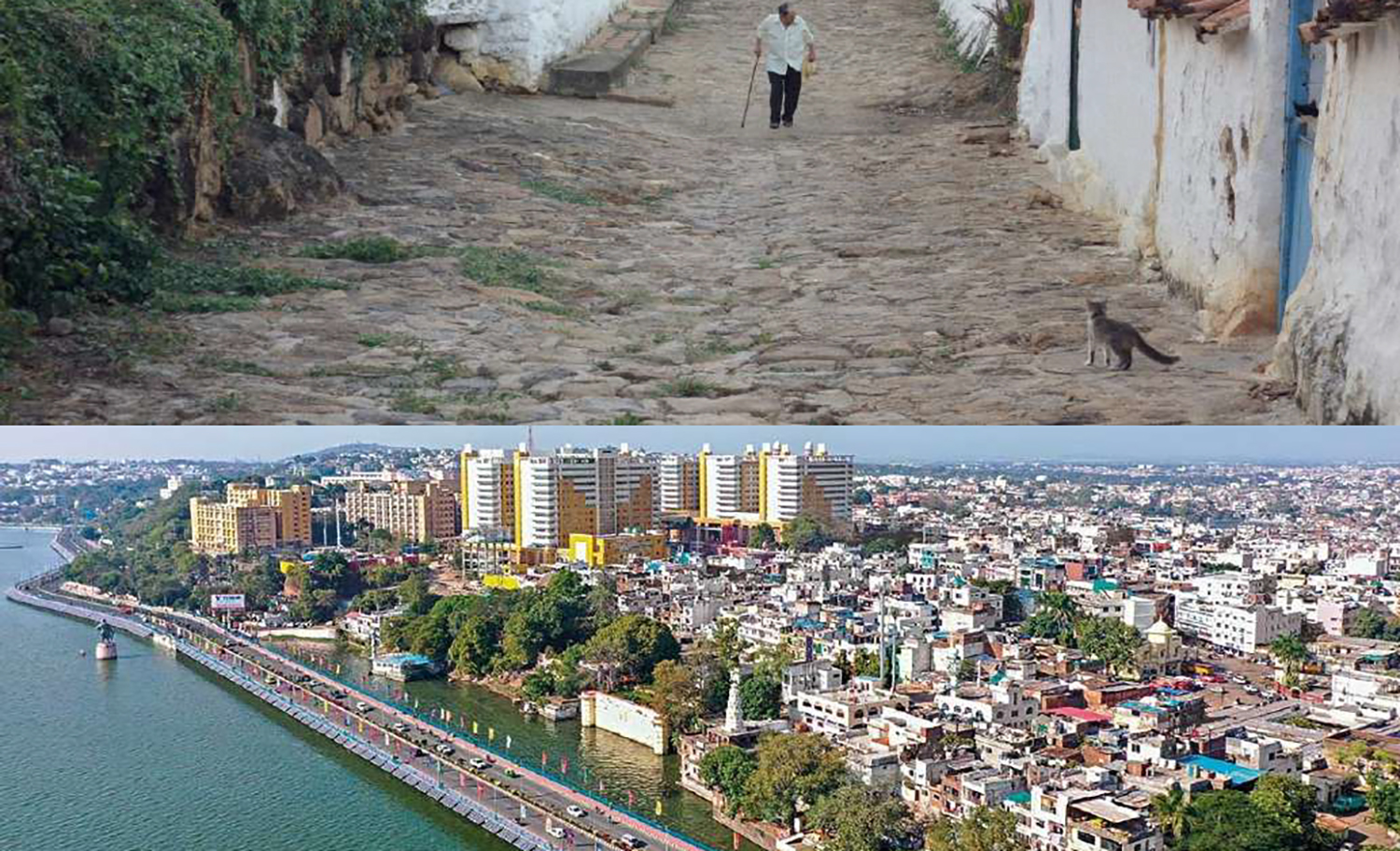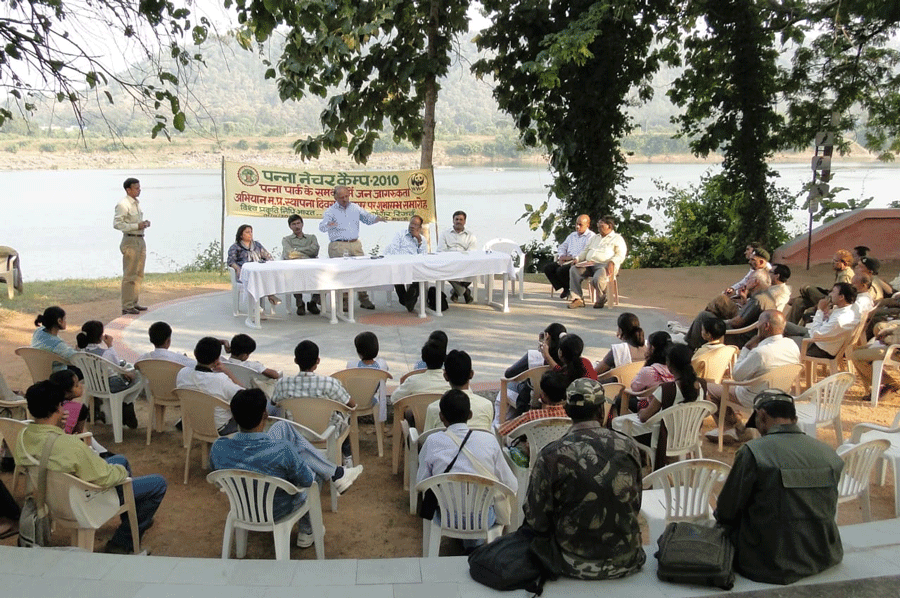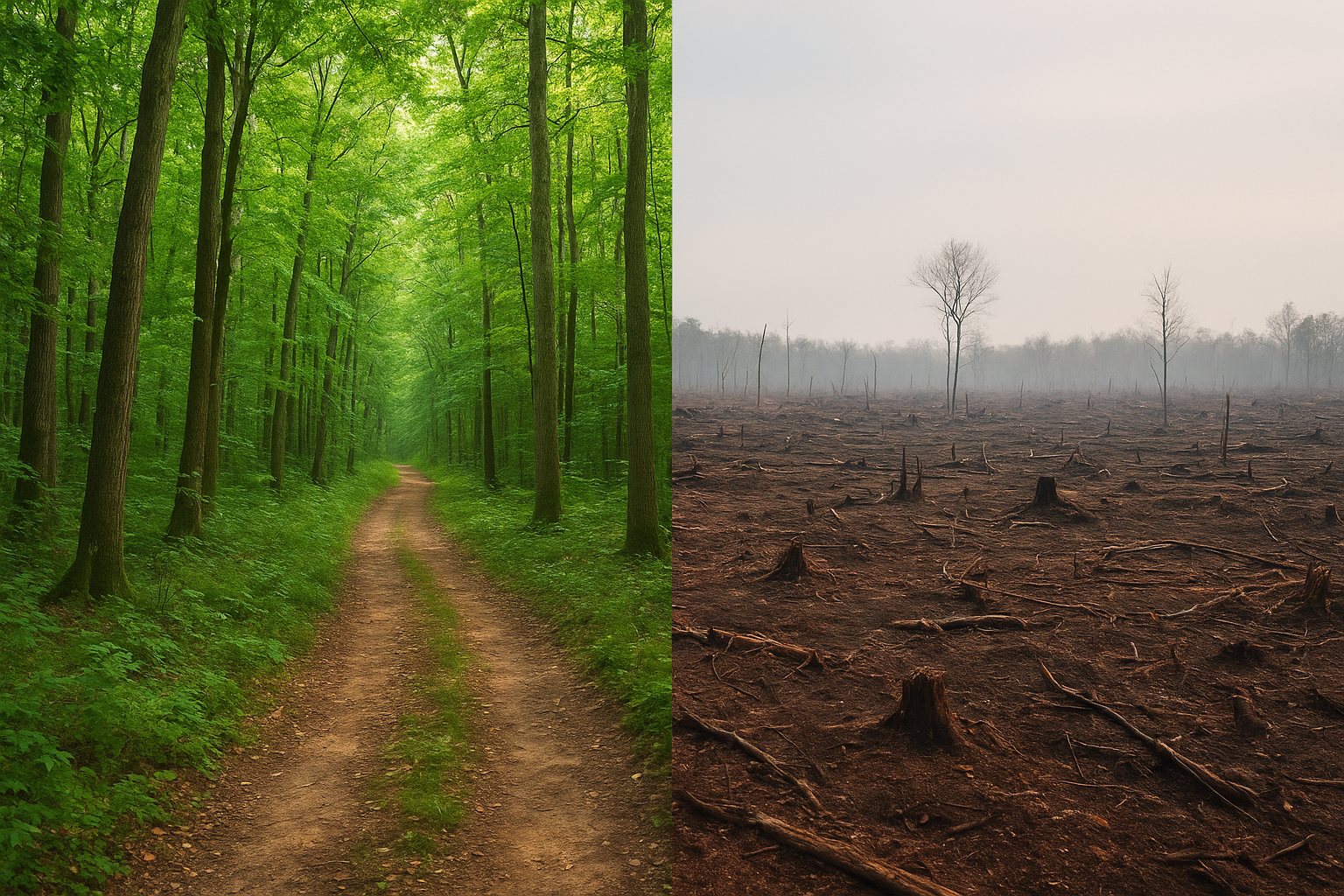THE TIMES, THEY ARE CHANGING
-D.V. Kapil (IFS Retd.)
Times change, people change. And as you realize sometimes, so do perceptions. As a small boy in Banat village of UP we had, what you could loosely term, two houses. One was our house, the ghar, where my family stayed, and one was what is called a gher, a large compound where the elderly men of our family stayed, which also had an area to keep the cattle. Being asked to go to the g/?erwas akin to torture for me. I thought it was way too far off, and trudging about those 200 meters in the heat and dust of that small village in the hinterland of Uttar Pradesh was a task I tried my best to avoid. The memory of those long, unwanted walks stayed with me, until, perhaps, over the years, my imagination magnified the trip between the house and the gher. The first time I realized that the actual distance was just a short, 5-minute walk for the adult me, I was quite startled. The once interminable stretch of the streets between my ghar and the gfterseemed shrunken. The same streets which I once thought very broad, seemed so narrow now that I could not even overtake a buggi (bullock cart) while walking. There’s a reason why I started with this story. After over three decades with the Forest Service, I wonder if all the perceptions that have changed in my mind are just that – perceptions – or are there also facts irrevocably intermingled with reality? Some things have changed – that nobody can deny. For instance, has our forest cover reduced since, say the 1960s? Undeniably. Is our wildlife depleting at an alarming rate? Yes. And from this comes the question – has the staff that works for this department depleted in quality while increasing in quantity? I could say I feel this, and of course, this could be just a perception, for it cannot be measured so easily in kilometers like the distance from my house to the gher.
During the course of my career, I have met several officers for whom I have a deep-seated respect. The Conservators I met in the starting of my service were dedicated, extremely knowledgeable men, extraordinary botanists, great silviculturists, those who surveyed forests with the most basic instruments and yet did it with perfect precision, and who, most of all, went into the forests where their presence was most required. I still find a few such worthy officers in the department, but when I compare the sheer wisdom, knowledge and dedication of those men from my initial years in service with quite a few of the senior officers in service today, I would say most of them, barring a few exceptions, are but ordinary. Or is it just the change in my perception? Admittedly, things do change over a period of time because of innumerable factors and the force of circumstances working simultaneously in different directions. I will also admit that the older generation always criticizes the working and lifestyle of the new one. Despite this, I am convinced that things have changed for the worse in forestry and forest management is not as good in shape as it was a few decades earlier.
I am sure every forest officer will admit that the department and the governments have badly failed in conserving and protecting the wealth and lifeline of its people. In the beginning of my service, for the purpose of scientific management, there used to be a “Conversion to Uniform” and “Improvement working circles” in most of the forest Divisions. Later, the quality of forests did not permit conversion any more and the Working Plan Officers had to come down to prescribing Improvement and Selection cum Improvement WC. The state of the forests still did not improve, and we had to go further down, and resorted to the Selection and Coppice with Reserves system. The last stage of our forests, now on a ventilator, is that maximum forests of all the divisions of MP have RDF: Rehabilitation of Degraded Forests. What does it show? It shows either our prescriptions were not correct or we did not apply them honestly, or in spite of the application of all principles of scientific management, we could not save our forests from external attacks.
In a recent study tour, that continued for about 45 days in one stretch, I revisited many forests after 20 to 30 years. The deserted look of the offices, ruins of the residential houses of the forest staff, illicit felling, overgrazing, the presence of cattle every where, absence of ground flora and young crop, fire damage, and absence of wildlife except in a few PAs, presented the ugliest face of our management. The reason for these tragic circumstances is simple. Most of the forest staff do not live in the remote areas, where their presence is most required. Equipped with a car or a motorcycle, wireless sets and/or a mobile phone, provided by government or personal, they believe that they can take care of the forests sitting in the cities. Coupe marking and other silvicultural works once used to be conducted by at least an Assistant Conservator or a qualified Ranger and then invariably inspected by the DFOS. ACFS used to go to the forests for long, extensive tours. Right now, there seems to be a marked lack of the live and cordial relationship that the forest staff needs to nurture and hold with the villagers in order to do their jobs properly. And in the yesteryears, I have seen the forest employees being a part of the village community, participating in all their rituals and functions. Villagers had great affection and respect for them. I remember an interesting incident in this context. It was 20th day of January 1974. At about 2:00 PM, the Collector and District Magistrate, Betul (MP), Mr. Pradeep Baijal, called me to his office and asked to accompany him on an impromptu tour. On the way, he stopped in every village and enquired about the patwari, school teachers, forest guards, ANMs, tribal department, gram-sewaks, etc. Except for forest employees, he hardly found presence of any other department. At Baheda FRH the forest guard arranged for a quick dinner. After dinner, we headed to Mohta village. There we stopped at the official residence of the Range Assistant (forester). It was about 2:00 AM, and the night was bitterly cold. The forester, in his nightclothes, peeped through the half-opened window, and seemingly in the next moment turned up in uniform, with two mugs of hot coffee. The Collector, sipping the much needed brew, asked him a number of questions before we left.
I was delighted that everything on his tour was going so well. But instead, Mr. Baijal, who had actually come on this tour to enquire into complaints against a tahsildar, had become suspicious. He asked me to clarify his doubts about leakage of his secret tour because he was wondering how and why the dinner was ready at the Baheda forest rest house; and how had Range Assistant Mohta been so prompt with hot coffee in the middle of the night. I, however, managed to convince him that all the amenities on his tour had been available because of the sincerity and promptness of the staff. Moreover, it was impossible to leak information about his tour because I had been with him ever since I was informed of it and after that there was no facility of phone or wireless.
The next day, at a farewell party, where all the district level officers of all departments were also present, Mr. Baijal praised the forest department to the high heavens. He said that if it had been in his power to close all the departments in the interior, he would have transferred the responsibilities of developmental activities to the forest department as a Department of Interiors. This shows the working culture in the forest department barely two or three decades ago.
This was not a one-off incident. The work culture in the department was once something to be proud of. Making temporary huts for the coupe in-charge and camping labour in the forest was common practice in those days. But would you believe a newly married forester, posted in Mohda range of Betul district, lived with his wife in a temporary tree house constructed in a timber harvesting coupe? This forester was entrusted to oversee felling and manufacturing of charcoal in a group of four coupes. His duty demanded his presence there in the middle of dense forests and he still wanted to live with his wife. Frightened with the very idea of living in the forest, the woman, born and brought up in urban area, gathered a little courage to live with her husband if he could keep her at a safer place. The husband then designed a tree house that would be safe from wild animals. I happened to see, on his invitation, this unique house when I visited them for few hours with another senior officer. Oh! It was a great evening. We watched big herds of Gaur, consisting more than a dozen individuals, moving about while grazing just under the tree house. Within four to five hours of our sitting over there, at one place, we saw almost seven to eight species including Gaur, sambhar, barking deer, civets: kasturi and khatas, monkeys, hares, bear, and crested serpent eagles. The forester lived amid such circumstances, with his wife, and performed the duty assigned to him. But now? Now things have completely changed. You would only occasionally – rarely -find any forest staff living at his designated headquarters, forget temporary hutments in coupes which don’t even exist now.
The naxalite problem has very recently grown very grim. Golapalli in Bastar district in MP, and Maharashtra’s Gadhchiroli areas have been the worst victims of this problem. When I joined the services, Golapalli was a peaceful, calm and quiet area. My first posting, after my two years of training were over in April 1969, was in Bastar, in the remotest forests of MP. I packed up and boarded a state transport bus, locally known as lal dibba. The services of the lal dibba were spectacularly unreliable, but there was no other option available. The road from Jagdalpur to Konta was a mix of earthen and gravel. Because of the old, broken wooden bridges and culverts constructed long ago on the road, no one was sure how many days it would take to reach to Konta, a distance of about 140 kms. It took three days and I changed three vehicles to reach there. On the fourth day, 20 July 1969, Janved Singh Bhadoriya, the Range Forest Officer at Konta, arranged a bullock cart for the next part of my journey to Golapalli. The cart driver, who knew that I had to travel 48 km with him, tried his best to make the cart comfortable by putting layers of hay and covering it over with a well-knit bamboo mat. My cart was all set to move. Torrential rain, the mushy and uneven earthen road and nullahs or flooding rivulets interrupted my journey after every 2 to 3 kilometres. Lying in the cart, I was watching the clouds that poured water at one moment and slowed to a /drizzle the next. Unable to get off the cart and stretch my legs, I felt uneasy and unwell. I took out my portable transistor and tuned to a news station. Breaking news about Apollo 11 descending on the moon was on, and thereafter a commentary of the event set me thinking about the differences between the developed and the under-developed nations. One country was making history by sending shuttles to the moon, and here I was, trudging along in a bullock cart, a journey that would continue for five more days because of floods. I did not even know the language of the people in my cart, and they were unable to understand my Hindi, except for a few words. My ration-box was full of provisions and during this long journey, which, ironically enough, was only 48 kilometers, we cooked and ate our food wherever and whenever it was possible. In a few days, we noticed that the pulses and other food material were changing their color due to fungi. By the fourth day, the food was in bright red, yellow, black, green and blue colors and was not fit for consumption. We managed to pass the days somehow, but the nights were interminable, made torturous by the mosquitoes and the insects that were attracted by the dim light of the lantern swinging in front of the cart.
A person reading this would naturally ask the question so, hasn’t all this changed for the better? Transport is quicker, a forest officer would not need to undergo such a problematic journey and life is easier all around, isn’t it? Yes. But in getting used to the ease that the technology now provides us, I would say that we’ve forgotten how to take the rough with the smooth. How many forest officers would now voluntarily go to the interiors, where an air-conditioned car cannot take them? Would they undertake a journey: in the bullock cart, or prefer to rely on someone else’s report just to avoid such a journey? I’m sure you’d agree that this, at least is not just a perception, but today’s harsh reality.

Author:
IFS Retd. from M.P.












